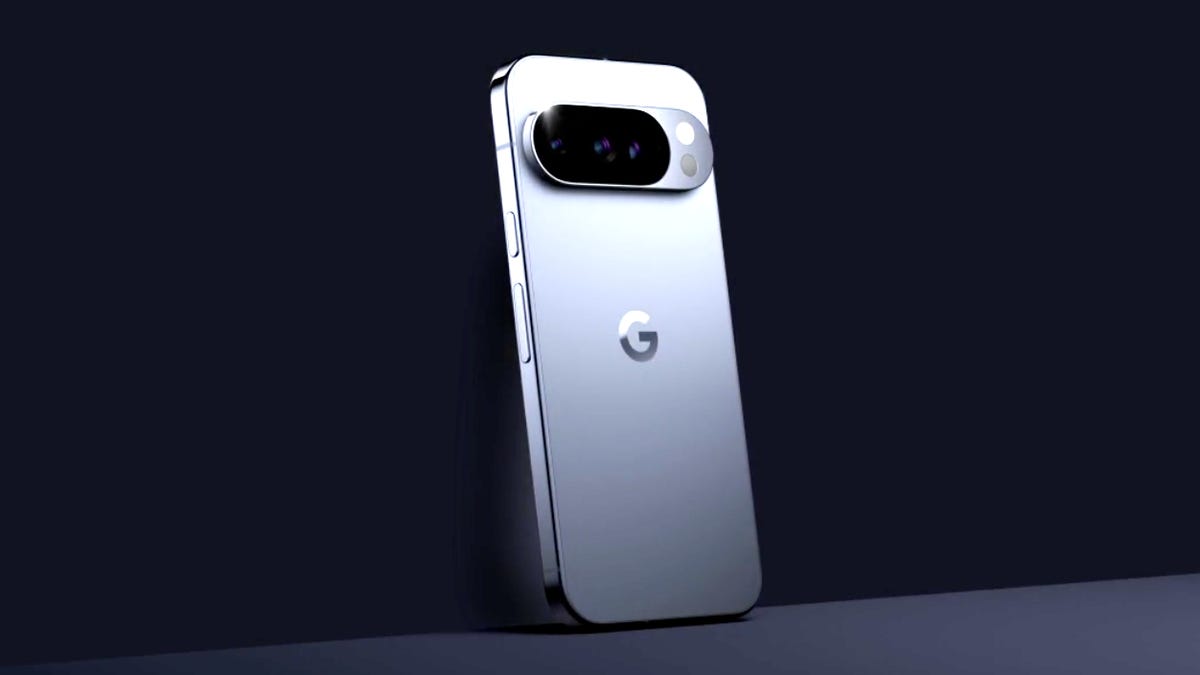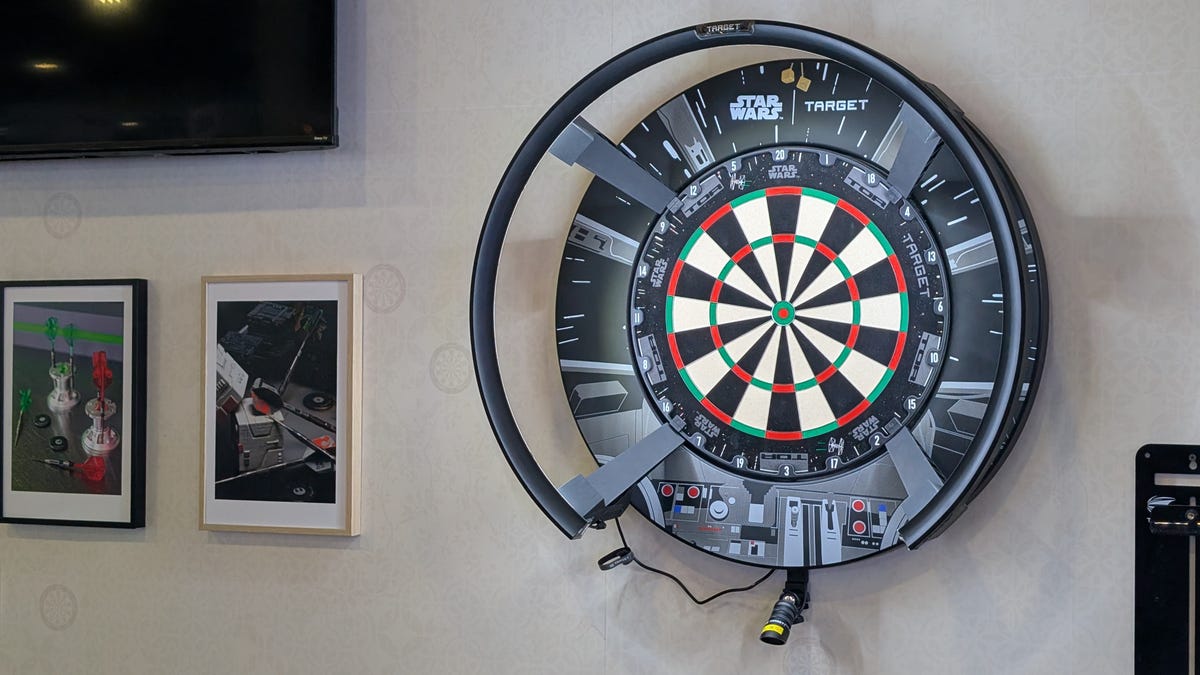Technologies
Made by Google 2025: We Found All the Biggest Pixel 10 Leaks and Rumors
Google’s Pixel 10 may be getting a lot of new features thanks to a new processor, camera systems and magnets.

The new Pixel 10 line will debut on Aug. 20 at the Made by Google event, and it almost feels like the phones have been revealed in detail thanks to a multitude of rumors and presumed leaks.
Google itself isn’t hiding that the Pixel 10 is coming, posting multiple looks of the phone when promoting the upcoming announcement, but the company is still keeping detailed specs and features of the Pixel 10 line to itself. If we follow the series of rumors, though, several recent details suggest a lot of new life to the phone line. While we do expect the Pixel line to continue the overall lineup of the Pixel 9 — including a base Pixel 10, Pixel 10 Pro, Pixel 10 Pro XL and Pixel 10 Pro Fold — rumors are pointing to significant changes to what’s inside these phones to make them more feature-packed than ever.
We’ve rounded up the biggest rumors we’ve found so far about the Pixel 10 line here, and will continue updating as we hear more ahead of the Aug. 20 event.
Pixel 10, 10 Pro and 10 Pro XL’s release date, pricing and cameras
Starting with the three non-folding phones in the Pixel 10 line that are getting revealed on Aug. 20, we expect the Pixel 10, Pixel 10 Pro and Pixel 10 Pro XL to look similar to the Pixel 9 line on the outside. This includes the same rounded camera bar on the back. The entry-level Pixel 10 will get a brand new third rear camera. While we can see the third camera in the photos Google posted of the Pixel 10, according to a chart posted by known leaker Evan Blass, this will be a 10.8-megapixel telephoto camera that will join a 48-megapixel wide-angle camera and a 13-megapixel ultrawide. This will help the Pixel 10 compare better with the base Galaxy S25, which also has a telephoto camera.
The 10 Pro and 10 Pro XL will continue to be differentiated from the standard Pixel 10 with a higher-specced camera system, which includes a 50-megapixel wide-angle, 48-megapixel ultrawide and a 48-megapixel telephoto, according to the same chart posted by Blass.
The colors for the Pixel 10 and Pixel 10 Pro phones also appear to have leaked, with Android Headlines reporting that the base Pixel 10 will come in Obsidian, Indigo, Frost and Lemonade editions. These names would roughly correspond to a black, blueish purple, light blue and yellow colors, respectively. The Pro models will also come in four colors, with Android Headlines reporting models named Obsidian, Porcelain, Moonstone and Jade. Those should roughly match up to black, white, gray and a light green. More photos of these phones were posted by Blass, purporting to be the Pixel 10 lineup from the front, back and side profiles
Despite the concerns with tariffs, the Pixel 10 line is rumored to keep the same starting prices as the Pixel 9 line.
Pixel 10 line rumored prices
| Phone | Storage | US Price |
|---|---|---|
| Pixel 10 | 128GB | $799 |
| Pixel 10 | 256GB | $899 |
| Pixel 10 Pro | 128GB | $999 |
| Pixel 10 Pro | 256GB | $1,099 |
| Pixel 10 Pro | 512GB | $1,219 |
| Pixel 10 Pro | 1TB | $1,449 |
| Pixel 10 Pro XL | 256GB | $1,199 |
| Pixel 10 Pro XL | 512GB | $1,319 |
| Pixel 10 Pro XL | 1TB | $1,549 |
Pixel 10 could support Qi2 magnetic charging
The Pixel 10 series could support magnetic accessories, making it one of the few Android phones that would work with many of the MagSafe accessories that were first built to work with Apple’s iPhone. That’s because the Pixel 10 is rumored to fully support Qi2 wireless charging, which supports magnetic alignment and has magnets built into the phone without needing a case.
An image posted by Blass appears to show a Pixel 10 with a circular wireless charger attached to the back, likely using magnets similar to how MagSafe works with the iPhone. If this is the case, it’s a huge step for the Qi2 wireless standard, as the only other Android phone so far that supports magnetic accessories is the HMD Skyline.
This would allow the Pixel 10 series to natively work with magnetic phone chargers, wallets, mounts and other accessories. Google might also create its own branding for this feature, as an Android Authority report claims that official Pixel 10 accessories that magnetically attach would be called PixelSnap.
If this comes true, it would also make it easier to swap accessories between the iPhone and the Pixel. In addition to the iPhone’s support for charging over USB-C, this would mean that MagSafe accessories first purchased to use with an iPhone should work just as well when swapping over to a Pixel 10 phone.
Google’s Tensor G5 chip
Following last year’s Tensor G4 chip in the Pixel 9 lineup, we presume that the Pixel 10 phones will be powered by a (supposedly named) Tensor G5 chip. We’ve heard a few Tensor G5 rumors, including that it will be made on an industry-standard 3nm process by chip fabricator TSMC, according to an Android Authority March report.
Other rumors are less promising, like a July report from WCCFTech suggesting that while the Tensor G5 is a significant upgrade on last year’s Tensor G4, a leaked benchmark test claims it will run slower than the Snapdragon 8 Elite processor that’s used in Samsung’s Galaxy S25 line and the OnePlus 13. That Qualcomm processor might also soon be surpassed by the next Qualcomm silicon coming at Snapdragon Summit in September. That’s not to imply the phone itself will perform slowly, as the same report says it will run faster than the Snapdragon 8 Gen 3 processor that powers
Whether the Tensor G5 lags behind other mobile chips isn’t as worrying as it might seem, since the Tensor chips are built for Google’s Pixel devices — and those don’t seem to be underperforming in daily use. As CNET Editor-at-Large Andy Lanxon said about the Tensor G4 powering the Pixel 9 Pro XL, «On the one hand, it’s disappointing not to see more of a tangible improvement over the predecessor. On the other hand, it doesn’t feel like it’s lacking in power in any major way.»
Pixel 10 Pro Fold
There aren’t many rumors pointing toward another Pixel Fold, but it’s always possible that Google surprises us with a big reveal of another version of its foldable phone line. The most recent, last year’s Pixel 9 Pro Fold, not only switched up its nomenclature to fit into that year’s standard Pixel lineup, but also altered its design from the wider passport-size original Pixel Fold to a taller, narrower format similar to other foldables like the Samsung Galaxy Z Fold 7.
One Pixel 10 Pro Fold rumor from WCCFTech only shared details about the supposed Tensor chip powering it. But a recent rumor from Blass suggests we could expect the usual upgrades: a new Tensor G5 chip, perhaps slight spec upgrades and maybe even similar camera or battery upgrades if they are announced for the Pixel 10 lineup.
The Pixel 10 Pro Fold would presumably get Android 16 out of the box, but since that software upgrade has already been released early (mere weeks after Google I/O 2025), last year’s Pixel 9 Pro Fold already has that update anyway.
We’ll keep updating this roundup as we get closer to Google’s Aug. 20 event for the Pixel 10 series.
Technologies
I Got Up Close and Personal With Boston Dynamics’ New Atlas Robot
Before Atlas takes its first steps into the world of work later this year, I found myself face-to-face with CES 2026’s most talked-about robot on the show floor.

When I say that I went hands-on with the new Boston Dynamics Atlas robot, I mean that I actually held hands with it. This humanoid robot, which CNET just awarded the Best Robot of CES Award, is one of the most advanced in the world, and I couldn’t pass up the opportunity to get up close and personal with it.
This product version of the robot, which is set to be shipped to Hyundai factories imminently to start working, has been the talk of CES this year. The specific Atlas robot I encountered was a static model that wasn’t turned on or fully operational. Our interactions were, therefore, sadly one-sided. Still, I ran my hands over its soft-touch plastic shell and gently prodded at its finger joints, wondering how it would feel if they gripped me back.
People tend to have varying feelings about humanoid robots — understandable given that they are built to some degree in our image, while also usually being stronger than us, with «brains» that we don’t fully understand. Atlas definitely evokes contradictory emotions for me — even more so when I stood face-to-face with it.
I’m in awe of the engineering, a little fearful of its capabilities, hesitant about what it could mean for the future of humanity and charmed by its design and styling. The periwinkle blue iteration of Atlas that I met on the show floor at CES 2026 almost bears more resemblance to a Dyson product than it does the industrial robots that defined Boston Dynamics’ early days, when it was best known for its work with DARPA.
«There’s a lot of really specific things about this robot that probably look a little weird,» said Zachary Jackowski, Boston Dynamics VP and general manager of Atlas. He pointed to the legs, which he described as «like nothing anyone else was doing.»
Atlas’ thighs are narrow set and in line with the torso, while the calves are wider set, attached to their upper counterparts with a circular joint. This robot is, in fact, all subtle curves and soft lines. There are no harsh edges or stark angles.
During a year when CES has been flooded with humanoid robots, Atlas definitely does stand out due to its design. It appears both less classically human and less industrial than some of its peers, while also lacking the often intimidating, featureless faces they tend to exhibit. Instead, it has two low-set cameras resembling eyes placed where you’d usually expect a mouth to be. Its face is a perfect flat circle, defined by an LED halo that gives it a somewhat Pixar lamp effect.
I asked Jackowski why Boston Dynamics decided to skew so relatively unhuman with this version of its humanoid. «Well, it’s not a human,» he said. «It projects the wrong first impression about a robot to have it pretend to be something that it’s not.»
Particularly in the early days of humanoids, he added, robots won’t have anything like human-like intelligence. People should look at it and see it for what it is — a tool for performing tasks safely and efficiently.
In fact, most of the design decisions were made to keep Atlas as simple, scalable and safe as possible, Jackowski said. I remark that there’s some irony in thinking of a humanoid robot as simple, given the complexity of the technology and development process to bring Atlas to life.
The key to making it simple, Jackowski said, is having a strong enough grasp of the technology to «accomplish the complex thing of building a humanoid robot,» but then being able to take it apart and understand that you can use fewer computers and actuators in it while achieving the same results.
And it’s essential to Boston Dynamics that Atlas is perceived as simple. After all, it’s a general-purpose humanoid, which might eventually be sent far and wide to fulfil all manner of roles. Jackowski calls it the «ultimate generalist.»
Simplicity aside, there are aspects of Atlas that Jackowski believes set it apart from other humanoids at the show. «The repairability of this robot is crazy good,» he said. «The runtime is crazy good. The strength is unlike anything.»
From working in Hyundai’s manufacturing plants, Atlas’s job trajectory is to eventually graduate to many of the same industrial environments where Boston Dynamics’ Spot robot works, before moving to bussing tables in the service industry and eventually into the home. The robot will evolve between now and then, Jackowski said. However, this could be an early glimpse of the type of humanoid that will eventually be our housemate.
That’s some way away, though, which is probably for the best. As I gaze up at Atlas, which I’d guess is around the same height as my husband, my feeling is that, however impressive Atlas is, I’m still not ready for it to move in.
Technologies
This Star Wars Dartboard Has a Secret That Will Stop You From Using the Force to Win
This cool dartboard has cameras to track your score and keep you honest

Right in the middle of the high-tech show floor at CES 2026 sits a pub called the Bull and Barrel with some of the coolest dartboards I’ve seen. Target Darts was showcasing its collaboration with both Star Wars and Xbox. Darts may not be for everyone, but I love «shooting some arrows» in my basement with the family. I also love anything Star Wars themed, so these tick a lot of boxes.
The basic Star Wars set comes with a branded board and wall protector that resembles the cockpit of the Millennium Falcon and costs $200. The board is of very high quality, with a tight-knit sisal fiber face, and the protector is thick enough to keep stray shots out of your drywall. The graphics are cool too, with nods to the original Falcon and even have the gold dice hanging above.
The big tech twist to this board, though, is the Omni light ring around the outside. It uses four cameras to track your dart’s position, then sends that info to an app that keeps score. The scoreboard is crisp and clear and uses the voice of legendary darts announcer John McDonald to narrate your game. It’s pretty great to hear his voice announce my terrible scores.
The Omni also allows you to connect with other players worldwide via shared scoreboards. I love the idea of my dad having a board at his house or playing a match with me at my house. It adds a feeling of community to home darts that you don’t normally get outside a pub or bar.
The Omni is a much more expensive proposition than the Star Wars set, coming in at $650, but if you’re serious about the game and a Star Wars fan, it looks to be a great investment.
Technologies
TikTok and FIFA Team Up for World Cup 2026 Coverage
A new team-up aims to make this summer’s tournament more accessible for fans.

If you hadn’t already planned on swiping on TikTok videos of the 2026 FIFA World Cup, a new partnership between the social media platform and tournament organizer FIFA could motivate you to start stretching out your thumbs.
As the soccer tournament nears — it will take place from June 11 to July 19 and span 16 host cities in Canada, Mexico and the US — TikTok will become FIFA’s first «preferred platform.» According to a FIFA statement on Thursday, this entails TikTok providing more coverage of the World Cup, including original content and even livestreaming of some portions of matches.
Don’t miss any of our unbiased tech content and lab-based reviews. Add CNET as a preferred Google source.
You can use the FIFA World Cup 2026 hub on TikTok to find content, match tickets and viewing information, as well as participation incentives such as custom stickers and filters.
In the US, World Cup games will air live across Fox and FS1. If you don’t have cable, you can get a live TV streaming service, such as YouTube TV, which includes those channels. Additionally, every match will stream live on Fox One and the Fox Sports app.
«FIFA’s goal is to share the exhilaration of the FIFA World Cup 2026 with as many fans as possible,» FIFA Secretary General Mattias Grafström said.
-

 Technologies3 года ago
Technologies3 года agoTech Companies Need to Be Held Accountable for Security, Experts Say
-

 Technologies3 года ago
Technologies3 года agoBest Handheld Game Console in 2023
-

 Technologies3 года ago
Technologies3 года agoTighten Up Your VR Game With the Best Head Straps for Quest 2
-

 Technologies4 года ago
Technologies4 года agoBlack Friday 2021: The best deals on TVs, headphones, kitchenware, and more
-

 Technologies4 года ago
Technologies4 года agoGoogle to require vaccinations as Silicon Valley rethinks return-to-office policies
-

 Technologies4 года ago
Technologies4 года agoVerum, Wickr and Threema: next generation secured messengers
-

 Technologies4 года ago
Technologies4 года agoOlivia Harlan Dekker for Verum Messenger
-

 Technologies4 года ago
Technologies4 года agoiPhone 13 event: How to watch Apple’s big announcement tomorrow
